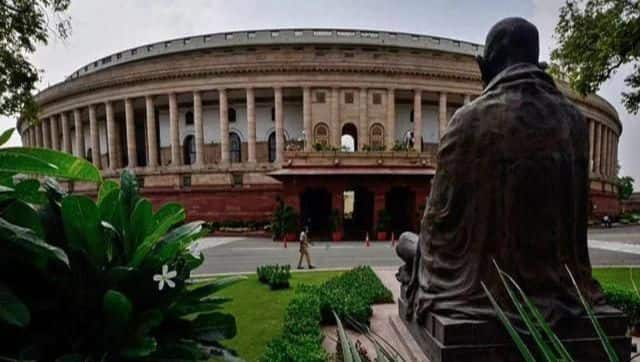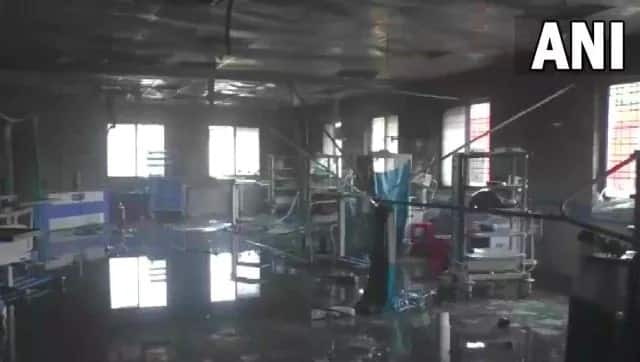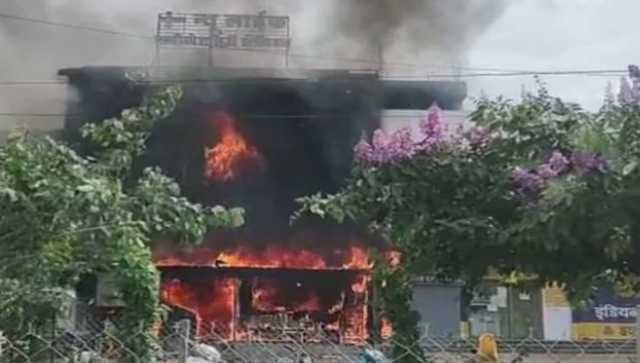Reports of 10 people including four patients being charred to death and five others injured in a major blaze at a private Madhya Pradesh hospital on Monday come as a shock, but hardly a surprise – if one has been following the news. Since August 2020, India has witnessed more than two dozen fires at hospitals with more than 122 people being killed, as per Scroll. But why is this happening? And who are the victims? Let’s take a closer look: As per Indian Express, most of the victims during the period between August 2020 and May 2021 were COVID-19 patients. As per the report, these fires occurred even though the fire checks and audits were conducted at these hospitals. As per The Hindu, hospital intensive care units (ICUs) are a great fire risk because they are oxygen-suffused, and need to meet high standards. Of 24 fires, were major fires and the rest were minor fires, the report added, stating that over half the total fires had occurred in the past two months after the country began witnessing a massive second wave of coronavirus. During this time, 59 deaths occurred due to these fires, of which, 33 were in Maharashtra due to six incidents of fire, while Gujarat witnessed 21 deaths in three incidents. Examining the figures from August 2020 to May 2021, Maharashtra and Goa reported the most deaths with 43 and 35 respectively. As per The Hindu, queries on hospital fires prompted the Centre to announce in Parliament on 23 March that a Fire Safety Committee conducts periodical audits on fire installation, heating, ventilation and air-conditioning, electrical sub-stations and other electrical equipment in the Union government’s hospitals. [caption id=“attachment_10992471” align=“alignnone” width=“640”]  Parliament of India[/caption] The health ministry said it had circulated strict guidelines in September 2020 stipulating third-party accreditation for fire safety and that a fire response plan should be in place. As per Scroll, the Central government in 2019 revised an existing model bill on fire safety, which many states had used as a framework for state-level laws. But fire officials from Maharashtra, Madhya Pradesh and Gujarat told Scroll that no state had yet fully adopted the provisions of the model bill – which included several new suggested provisions including that buildings over 15 metres in height should be equipped with automatic sprinkler systems, fire alarms and fire extinguishers, and have a dedicated officer to oversee fire safety – into their own laws. ‘Since 2011, 90% fire incidents at govt hospitals’ As per Scroll, a 2020 study in the International Journal of Community Medicine and Public Health examining 33 major fire mishaps in Indian hospitals between 2010 and 2019, of which 25 occurred in government hospitals. Only 19 of the 33 hospitals had a functional firefighting system. Dr Rashmi Sharma, associate professor of community medicine at GMERS Medical College, Ahmedabad, co-author of a study on hospital fires in the Indian Journal of Community Medicine in 2020, told Scroll government hospitals were the most serious violators of fire safety regulations. “Of the 19 fire incidents that I studied since 2011, 90 per cent occurred in government hospitals,” she told Scroll. Manoj Choudhury, director of Edifice Consultants Private Ltd, an architectural and construction firm, agreed. “A lot of designing is compromised to save cost,” he said. “Government hospitals always go for the lowest bidder, that will also dilute specification on quality. This is why public projects are prone to such mishaps.” But fire experts speaking to the Indian Express blamed an “overstressed” hospital system unable to bear the rising patient load for the frequent fire incidents. ‘Pressure on system’ “Hospitals are increasing beds, equipment and staff to admit more COVID patients, but it is not possible to immediately expand the electrical wiring system. Medical equipment or wires carrying current beyond their capacity can overheat. That is what is happening in many hospitals. We don’t need just a fire audit, we also need an electrical audit,” Rajendra Uchake, Chief Fire Officer in Nagpur, told the newspaper. In 13 of the 24 cases, the fire began in an ICU, as per the report. “These hospital ICUs did not function up to 100 per cent capacity before the pandemic. The ventilator, equipment, air conditioners are working 24 x 7 now. It puts a pressure on the entire system,” Santosh Warick, director, Maharashtra Fire Services, told the newspaper. Warick added that ideally air conditioners need to run for 15-16 hours and then need a cooling period. In November 2021, a major blaze killed 11 patients at a Maharashtra hospital. A senior official of the Ahmednagar civic body at the time claimed the hospital lacked several safety measures suggested by them. [caption id=“attachment_10996381” align=“alignnone” width=“640”]  A glimpse of the burnt down area of Civil Hospital in Maharashtra’s Ahmednagar. ANI[/caption] “Barring fire extinguishers, the other safety measures that we had suggested were not there,” Ahmednagar Municipal Corporation Chief Fire Officer Shankar Misal told PTI. Asked if the fire could have been doused at an early state had there been sprinklers at the facility, he said ‘yes’. “Our recommendations, including for sprinklers, were not implemented,” he said, adding that this was the first such incident at the hospital .”There were oxygen pipes, electric wires, medical instruments, etc. But, most probably, short circuit seems to be the cause of the fire. Our officials checked the CCTV footage and it was seen that smoke first started billowing through the ceiling.” As per Scroll, the Maharashtra government sped up their efforts after the fire. Since then, all the state’s public hospitals have undergone a fire audit. Of the 525 government hospitals that have submitted proposals to install firefighting equipment, 451 have received approvals as of March, according to data that Scroll.in accessed from the state health department. However, most hospitals are yet to install firefighting systems. “The process of calling for tender will start now,” a district health officer said.
“It will still take several months.”
As per The Hindu, the Supreme Court in December directed all states to carry out fire safety audits of dedicated COVID-19 hospitals. However, it has become evident that states lack the manpower to inspect and ensure compliance with safety codes, the report stated. One option is to make heavy fire liability insurance compulsory for all public buildings, which would offer protection to occupants and visitors and bring about external inspection of safety, the report added. With inputs from agencies Read all the Latest News , Trending News , Cricket News , Bollywood News , India News and Entertainment News here. Follow us on Facebook, Twitter and Instagram.


)

)
)
)
)
)
)
)
)



